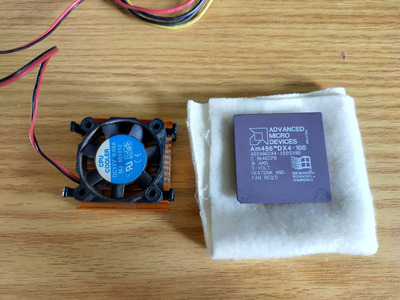First post, by BobyTheDragon
Hey there everyone,
Recently I was on a national auction site, Like Ebay but for our country only and managed to score this little fella for $1.50 with the cooler.
Ive never owned such a component this old. But I want to put the little guy to good use and begin on a project of building a good old 486 pc for some good old dos gaming + maybe some windows 3.11/95
In addition to that, I am only 19 years old. Yet have a major interest and appreciation in old tech (I have a Windows 98 slot 1 build, as well as a Windows XP build that I have built over the covid lockdown). So my knowledge of old pcs is already a bit extensive.
The only requirements I would like to follow is:
- Not too expensive, I do expect to spend a bit of cash. But I don't want to go anything extreme.
- PCI Slot? For possible USB 2.0 use with USB. Though its not the end of the world if I cant use it. The real use would be a trident 2mb video card I have laying around which I think is a good fit for it.
- ATX PSU. Dont really wanna risk anything with an old AT psu. Though I know adapters do work for ATX to AT. Only issue is I wont have a -5 volts (As older ISA Soundblasters use). Apparently I can add something inline however which I can do (I have basic soldering equipment and have soldered before).
I think I would mainly want to know is, Is there anything in particular I should watch out for? Good or bad? Specific motherboards known to have weird compatibility for example.

